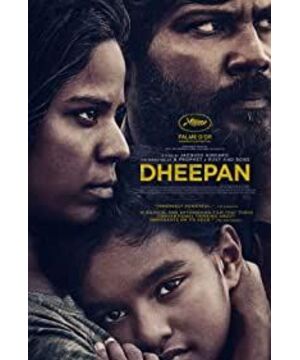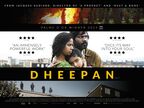2012's Rust and Bone still received rave reviews, won awards, and gained a wider audience thanks to popular superstar Marion Cotillard. However, the director's new work this time has some traces of traceability: a small-budget movie, a group of 18-line actors, and a brand new theme. It's probably no accident, then, that it's a well-deserved masterpiece and one of Odia's most powerful works to date, maintaining his usual high standards but less of the flaws of the past. Maybe the last few minutes of the end credits are a different story, but let's start from the beginning.
The film is co-written by Jacques Audiard, Noé Debré and Thomas Bergorn, who also worked with the director on The Prophet and Rust and Bone. The story begins in Sri Lanka, where a woman named Yarini (Kalieaswari Srinivasan) seeks shelter for the young orphan Elia (Claudine Vinasithamby). They found a man they had almost never met, got a new passport, and the three sailed to France together. They are both Tamils, a minority living in Sri Lanka, and have fought for independence in the past, but their struggle was defeated in 2009. And this man, now called Dipan (Antonythasan Jesuthasa), is a very good retired soldier who used to serve in the Tamil Tigers.
The makeshift family was granted shelter in France. Tormented by the war and the death of his wife and children, Dupin lives in a dilapidated residential area controlled by drug dealers and works as a janitor. Yarini also finds a job here, taking care of and cooking for the disabled uncle of local gang boss Brahim (Vincent Rothier), while Elia has to adjust to the new life in a foreign country. school life. They both tried to look forward and start a new life; but when the strife resurfaced, Dupin decided not to hold back.
Audia has never been shy about portraying multiculturalism in his films, but Dupin the Wandering is his first face-to-face colonial experience, which lends a new element to the film. Sri Lanka appears rarely in the film, but what drives the development of the whole film is the protagonist's yearning for it and the hope of a new life, and when describing this journey from home, the film also expresses it in great detail and affection. Sincerely.
The title is actually a bit inaccurate, because the film focuses on the three protagonists, not just Dupin (sadly, although the rookie actor who played Elia performed very well, she has a relatively small role in the second half), but due to Burdened with the most painful past, Dupin is the most eager to integrate into French culture. And Yalini is not so reluctant. After all, she is only 26 years old, but suddenly she has an older fake husband and children, and she has to learn a new foreign language.
Both lead actors are excellent and relatively new to the screen: Jesuthasan, who plays Dipan, is a well-known writer, while Srinivasan, who plays Yarini, is a first-time actor for the big screen. Their slightly youthful performance seems to be an understatement and a strong gesture, which makes the movie seem to have a fresh heartbeat. Fake drama comes true is easy to think of "American Spy", but the love depicted in the film is even more real and believable than "Rust and Bone". The film maintains the original vitality of Odia's style, and is the most sympathetic and human in all his works.
The uproar after the premiere showed that the final segment of the film was still controversial, and that was part of Dupin's revolt to protect his family. The director chose a more accustomed and conservative way of shooting. I don't have much objection to this, after all, this turning point is not too abrupt. As the film draws to a close, that sense of unresolved tension builds up, and Dupin's decision to stand up to protect the makeshift family (even though they may not need help) is not unreasonable, given the tragic loss of his wife and children. But powerless. Perhaps Odia's approach to filming is a little too extreme for the controversy, but it's still true for the film and for the characters themselves: Dupin escapes from one battlefield, turns and steps into another; The visual impact of this scene also makes the audience feel more empathy for this move. Of course, despite this, I also admit that the ending is the biggest flaw in the whole film. It is too neat and doesn't seem to be distracted at all.
In addition, the film is excellent in both visual and sound effects. Emerging photographer Eponine Momenceau contributed some of the most memorable film scenes at Cannes this year, as was the soundtrack by electronic musician Nicolas Jaar. This is Odia's heyday. He abandoned the artificiality of "Rust and Bone" in order to dig deep into the hearts of the characters, and chose a worldview that is extremely humane and even warm. Therefore, we It ushered in this work that shined in Cannes this year.
View more about Dheepan reviews










